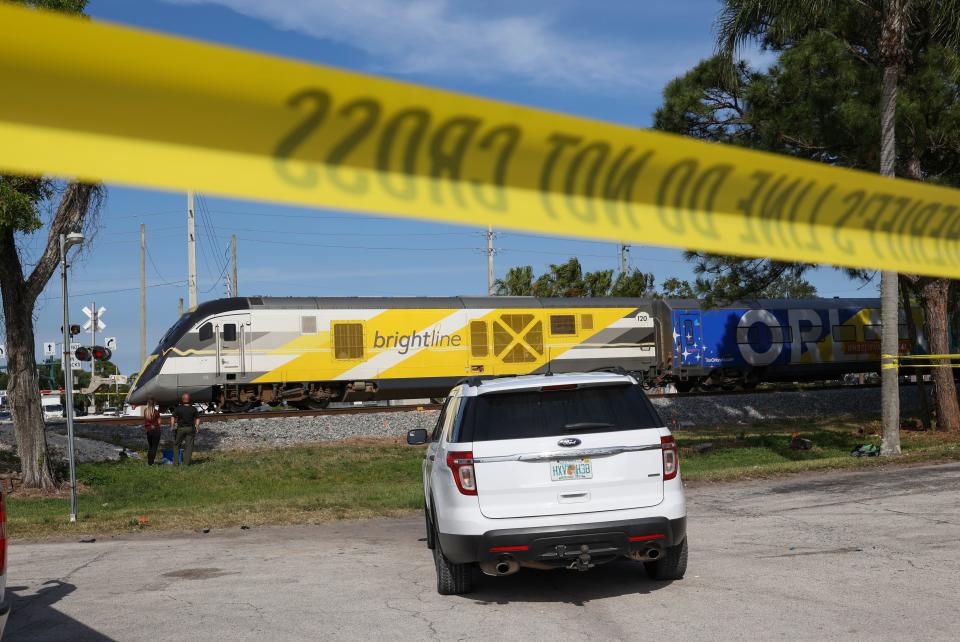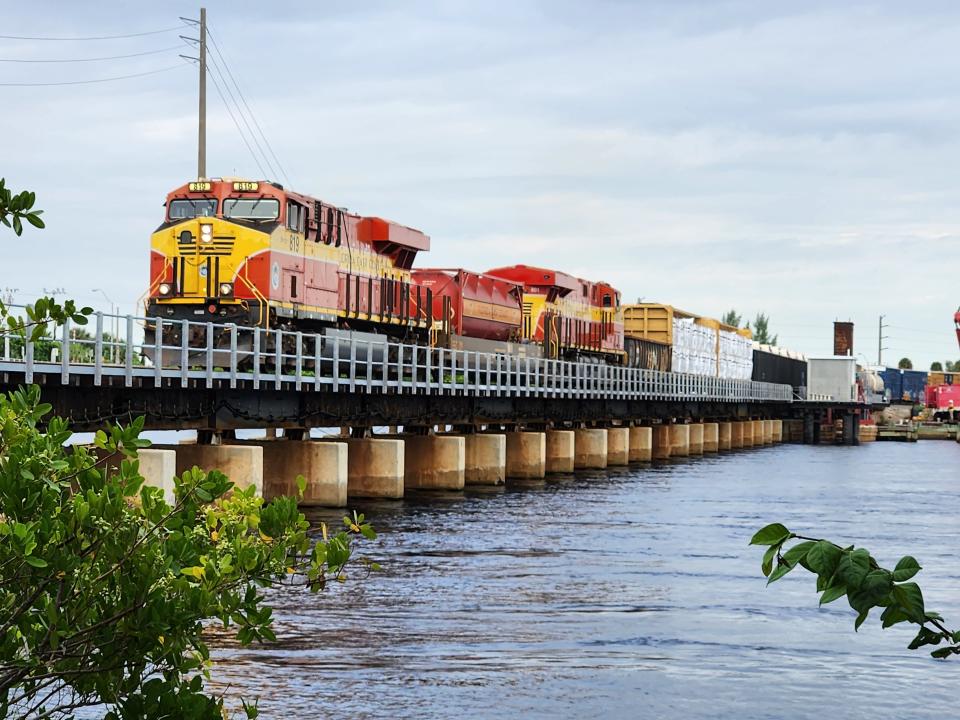Brightline Treasure Coast future bright? Not with deaths, lagging ridership, huge debt
The past: It was predicted All Aboard Florida, also known as Brightline, would be very dangerous, would cost taxpayers lots of cash despite claiming to be a private corporation and would not meet ridership or revenue projections.
All came to pass and more.
The Florida East Coast Railway freight route was the most dangerous in the country in 2012 based on deaths per track mile. The number of grade crossings in densely populated areas was a main factor and “trespassing is epidemic,” to quote the Federal Railroad Administration engineer. It didn’t take much to figure out when they increased speeds by 20 to 30 mph and added 32 trains per day more people would die.
Two previous studies on High-Speed Rail for Florida concluded the FEC route was the worst route to use based on cost, safety and speed; the best was along Interstate 95 or Florida's Turnpike. But FEC owned the coastal route, saw synergy with the widening of the Panama Canal and wanted double freight capacity, as we said then ― it’s All About Freight.
It was confirmed in a 2018 study of Florida passenger rail that the Florida Department of Transportation did not (still doesn’t) have regulations for trains going 79+ mph. Over 125 mph and true high-speed rail regulations kick in: no grade crossings and totally fenced. Brightline found uncharted (and unregulated) territory between 79 and 125 mph and “Higher” Speed Rail was borne — on freight rails.
In little over 4½ years, 113 people have died on the rails; that’s an average of 25+ deaths per year. Any other transportation mode experiencing that many deaths would be drastically curtailed by now. That same 2018 study recommended more fencing, pedestrian channeling and pedestrian bridges, but they were too expensive to install.
Privately owned, but we're paying

An opposing view: Brightline will devastate Vero Beach, Stuart? Nine years later, claims remain unfounded
As our board member recently told FDOT representatives: ”I worked in the Northeast for many years … with many railroads and its share of mentally debilitated and substance-addicted folks. But it doesn’t have the so-called suicides on its tracks like Brightline does … the main difference — they’re totally fenced with no pedestrian access to the rails.”
As to the “privately owned railroad,” that’s a misnomer. To start, the system cost taxpayers by selling billions of tax-free bonds for construction ― the federal treasury doesn’t receive tax revenue from their sale. Add the doubling of the annual crossing maintenance fees paid by each municipality ― Indian River County’s was projected to go from $250,000 to $500,000 annually.
But that’s nothing compared to the state and federal dollars going to make the trains safer, including thousands in state and federal grants for the safety equipment everyone predicted it would need, from quad gates to fencing. Three deaths this year at one crossing in Melbourne is an example of FDOT not requiring a quad-gate system there. It was too expensive for the corporation; now we will pick up the tab.
Lagging ridership, deficits

And the bridges! In 2014, the U.S. Coast Guard extended its public meeting schedule with the outpouring of concerns on the Loxahatchee, New and St. Lucie rivers railroad bridges. Now we’re all paying $200 million to replace the St. Lucie single-track bridge to benefit the corporations — both Grupo Mexico, owner of FEC, and SoftBank, Japanese owner of Fortress Investment Group.
Lastly, the financials. We all have read and anecdotally confirmed the low ridership figures. The company is in a Catch-22 situation: Its preconstruction report stated every minute added to the length of a trip would decrease ridership. People want speed.
To make residents happier, management is pressured to add stops, which adds time, reducing ridership. No wonder they only select locations where the train has to slow down to round a curve. Notice how the PR team boosts good publicity with promises?
Lagging ridership numbers and discounted tickets have resulted in major revenue deficits. Based on its 2023 financials, Brightline likely will need to refinance billions of dollars in debt by flipping those bonds. The jury is out on whether that’s possible based on the numbers. Happy talk about increasing ticket prices (from deep discounts) and increasing “long haul” (Miami–Orlando) ridership to increase revenue has little supporting evidence.
Bottom line: We all knew it would be dangerous and so did they, but they built it anyway. Now, the Alliance for Safe Trains understands “the train has left the station.”
We want what our name implies — a safe train made so by the corporation, not the taxpayers. From the start, people envisioned the high-speed rail of Japan or Europe; what they got is113 deaths and a glorified Amtrak that doesn’t even stop in our towns.
We told you so.
Susan Mehiel, Vero Beach, is the coordinator of the Alliance for Safe Trains. She has opposed the Brightline project since 2014.
This article originally appeared on Treasure Coast Newspapers: Predictions about Brightline challenges true: dangers, money issues

